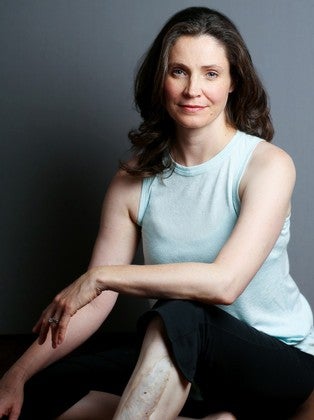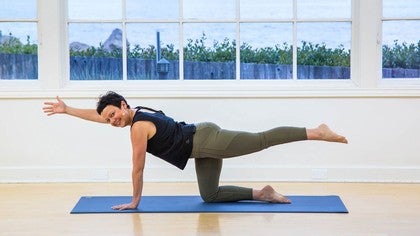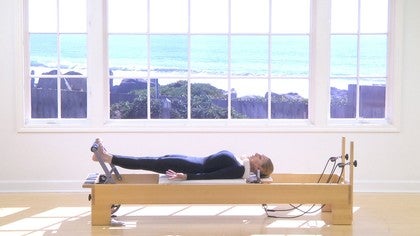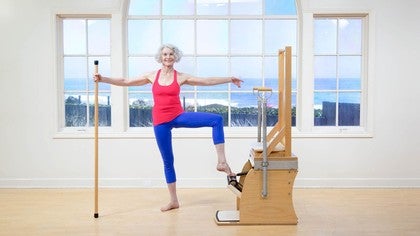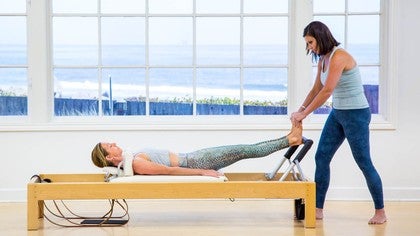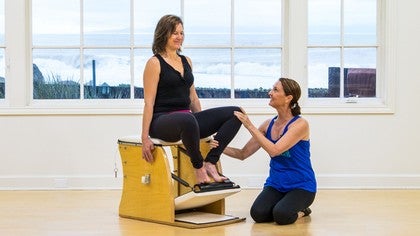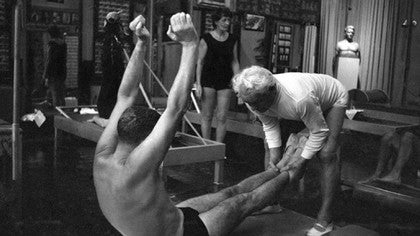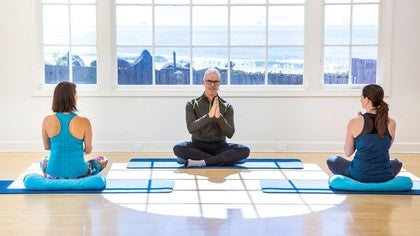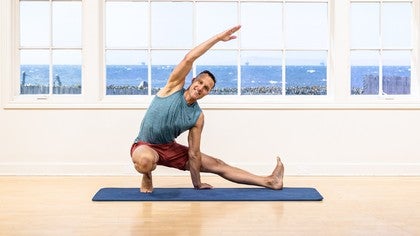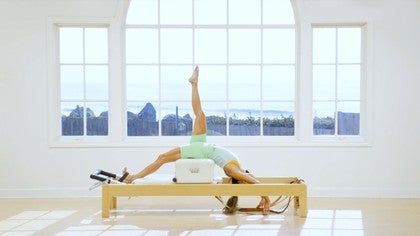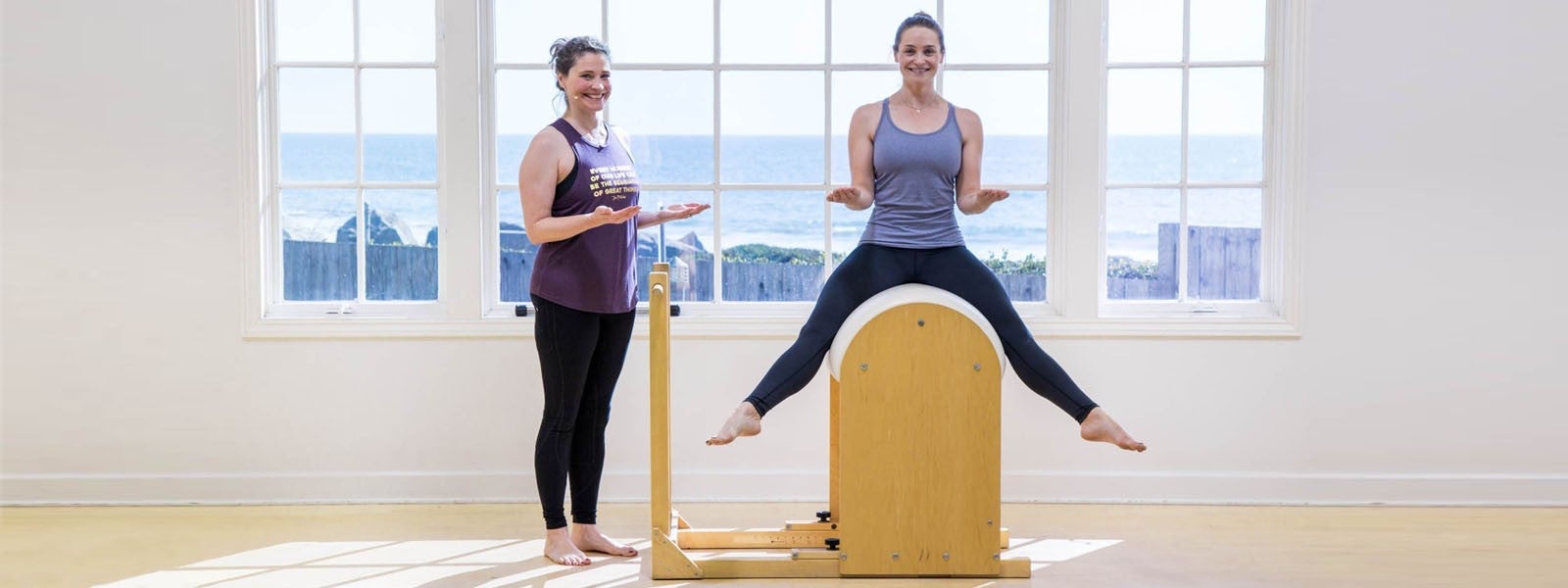
Moving through Injury to Recovery
In August 2021, I had an accident that shattered my left calcaneus (heel bone). Following surgery to reconstruct the bone, I am the proud owner of a titanium plate and more than 11 pins.
For the first six weeks I was not allowed to remove the air boot, also known as an air cast, a short boot that protects the injured foot or ankle while allowing movements such as walking. The only exceptions were during dressing changes and showering. I had to eat, live, and sleep in the air boot to keep my ankle joint at 90 degrees to prevent a “dropped foot,” or difficulty lifting the forefoot.
I am fortunate that my Pilates studio is in my home. Every day, I was able to do some Mat work and apparatus Pilates. After six weeks, when I felt more confident moving around in the air boot, I resumed my online Zoom classes with Blossom Leilani Crawford, a Pilates instructor based in Brooklyn, New York.
This is the beauty of the Pilates studio: we have the ability to work around any injuries and keep the rest of the body nourished and moving well. So where should you start if you are injured, whether it’s due to a sprained ankle or another injury or surgery that keeps you from moving the way you used to?
If you are the client:
When you have an injury, much of your focus and energy goes on the injury itself and your healing. Having a Pilates session during this time gives you the space to focus on keeping the rest of you moving well and reducing the impact of the injury on the rest of your body.
Talk to your teacher to discuss any concerns you may have about returning to the studio. He or she will be able to reassure you and ensure that your session is safe and aimed at helping you move and feel better around your injury.
If you are the teacher:
Don’t be afraid to refer your client on to another instructor if you do not feel comfortable working with them. We do not have to be the teacher for everyone all the time. Referring a client to someone else does not reflect on your teaching. Rather, it shows that you are a considerate teacher who is focused on your clients well-being. Your clients will thank you for your honesty.
Building Trust and Overcoming Fear of Movement
You and your client can work together as a team to ensure that the session is both safe and satisfying. Your client may be concerned about moving around in a studio and potentially causing further injury. He or she may need reassurance that there will be movements they can do to offset the impact of their crutches, air boot, and other side effects of their injury.
He or she may have lost strength and muscle mass, especially if there has been a surgical procedure and a period of bed rest. The client may need to adjust to a different pace of class or even forgo classes for a while. They may not be as quick to move/change positions as the rest of the group. If they need modifications, it may slow the class down for the rest of the group. Consider scheduling some one-on-one sessions before they return to the class setting.
Safety is the Priority
Both you and your client must feel safe when they are in your studio. If they are on crutches, are they ready to be in a busy studio environment? You may need to schedule them during times when the studio is less crowded.
What is their injury and where are they in their recovery? There are usually multiple stages to healing a lower limb injury:
- Completely non-weight bearing: While the breaks begin to mend. This is often accompanied by a period where the limb needs to be constantly elevated.
- Partial weight bearing: Only lightly touching the toes/foot to the floor while on crutches.
- Complete weight bearing: Returning to normal movement/activities.
Working Around the Injury
As the teacher, you need to be aware of the client’s injury, how it is being treated, and what the client is currently able to do. If possible, liaise with their doctor or physical therapist to ensure you fully understand any contraindications or limitations they are working with.
In my early sessions with Crawford after my accident, we worked around my injury. At no point did I remove the boot. This is the beauty of the Pilates method. It is possible to give your client a full session without compromising their injury.
“Think of working with your injured client as a two-way street. Be mindful of the new rules the injury brings up, such as no single leg work, or they can’t raise their arms above their head, or as in Julie’s case, she could not stand on her leg,” says Crawford. “The Pilates method has so many movement possibilities and equipment. It is an opportunity to stretch your mind when figuring out how to help people move better.”
In addition to the physical benefits of moving my body, my Pilates sessions are important for my mind and mood. As someone who is used to an active lifestyle, having to adjust to a period of enforced rest due to my injury was very difficult.
Having a dedicated time to move feels freeing for my body and mind. Your clients, even those who are working with injuries and limitations, may feel the same. After all, everyone deserves the chance to experience the joy of movement.
Have you practiced or taught Pilates while recovering from an injury? Let us know how it went in the comments below.
Comments
You need to be a subscriber to post a comment.
Please Log In or Create an Account to start your free trial.
